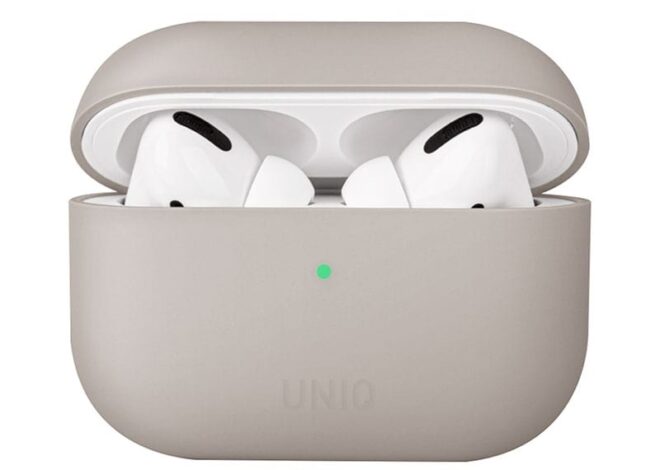
USB-C to HDMI: A Comprehensive Guide
Introduction to USB-C and HDMI Technology
USB-C to HDMI Universal Serial Bus Type-C (USB-C) and High-Definition Multimedia Interface (HDMI) are two integral technologies prevalent in modern electronics. USB-C is a versatile connector that supports multiple functionalities, including d ata transfer, power delivery, and video output. Its bi-directional design allows users to plug the connector in either way, making it user-friendly. The adoption of USB-C in a wide array of devices, such as laptops, smartphones, and tablets, reflects its significance in streamlining connections while enabling faster transfer speeds compared to its predecessors.
On the other hand, HDMI is specifically designed for transmitting high-quality audio and video signals between devices. Since its inception, HDMI has remained the standard for connecting various consumer electronics, including televisions, projectors, and gaming consoles. With its ability to support high resolutions and advanced audio formats, HDMI has established itself as the preferred choice for home entertainment systems and professional equipment alike.
The rising prevalence of USB-C inputs on devices, especially in laptops and smartphones, emphasizes the need for compatible technology that can facilitate video output. This necessity has paved the way for the development of USB-C to HDMI adapters, which bridge the gap between the two technologies. By utilizing these adapters, users can seamlessly connect their USB-C equipped devices to HDMI-enabled displays, ensuring that they can enjoy high-definition content without facing compatibility issues. Understanding both USB-C and HDMI is crucial for anyone looking to navigate the increasingly interconnected landscape of modern gadgets and peripherals.
The Benefits of Using USB-C to HDMI Adapters
USB-C to HDMI adapters provide a multitude of advantages that facilitate seamless connections between various devices. One of the primary benefits is their ability to transmit high-definition video and audio signals. This ensures that users enjoy improved clarity and picture quality when projecting content from a USB-C device to an HDMI-equipped display. Whether you are watching a movie, presenting a slideshow, or gaming, the vibrant colors and sharp details delivered through a USB-C to HDMI connection significantly enhance the overall experience.
Another notable advantage of USB-C to HDMI adapters is their broad compatibility with various devices. As more manufacturers adopt the USB-C standard, users find that they can connect their smartphones, laptops, tablets, and even some gaming consoles to HDMI displays effortlessly. This versatility makes USB-C to HDMI adapters invaluable for individuals who utilize multiple devices in both personal and professional environments. No longer limited by the type of port available on a device, users can easily share content across different platforms.
Furthermore, USB-C to HDMI adapters often come equipped with multi-functional capabilities. Many adapters offer additional ports for charging (Power Delivery), USB connections, or data transfer, allowing for a more streamlined setup. This comes in handy during conferences or meetings, where participants may require quick access to various peripherals without juggling multiple cables. With a single adapter solution, users can maintain an organized workspace and quickly switch between tasks without the hassle of disconnecting and reconnecting different devices.
In summary, the advantages of using USB-C to HDMI adapters extend beyond mere connectivity. Their capacity to deliver high-definition audio and visual quality, compatibility with a variety of devices, and multifunctional support make them essential tools in today’s technology landscape, catering to both casual and professional users alike.
Compatibility Considerations
The compatibility of USB-C to HDMI adapters is crucial for effective functionality. Users should first assess whether their devices support USB-C output. Laptops, tablets, and an increasing number of smartphones come equipped with USB-C ports that can transmit video signals. However, not all USB-C ports are created equal; only those that support Alternate Mode can output video effectively. This mode allows the USB-C connector to send DisplayPort, HDMI, or VGA signals, depending on the device in use.
Selecting the right USB-C to HDMI adapter also involves understanding the differences between various technologies. The DisplayPort over USB-C feature permits the transmission of high-quality video and audio signals via a USB-C connection. This technology typically offers better support for higher resolutions and refresh rates than standard HDMI connections. However, some devices may only support basic USB-C functionality, which could restrict the capability to output a video signal or result in lower quality.
When considering devices, it is essential to check both the specifications of the USB-C port and the compatibility of the adapter. For instance, while many modern laptops and tablets support USB-C Alternate Mode, older models may not have this capability. Similarly, not all smartphones are designed to utilize USB-C output for video. Before investing in a USB-C to HDMI adapter, users should verify their device’s compatibility through manufacturer documentation or technical specifications to ensure seamless connection.
Additionally, some adapters may require an external power source to function optimally, which is another factor that should be considered during the selection process. Proper understanding of these compatibility aspects will help users maximize their experience with USB-C to HDMI technology.
How to Choose the Right USB-C to HDMI Adapter
Selecting an appropriate USB-C to HDMI adapter is essential for ensuring compatibility and performance with your devices. There are several key factors to consider when making this choice.
Firstly, cable length is a significant aspect. Depending on your setup, you may require various lengths ranging from a short cable for close connections to longer options for more distance between your devices. Finding a reliable length ensures you have flexibility while maintaining a tidy workspace.
Resolution support is another critical factor. Many modern USB-C to HDMI adapters support high-definition outputs, including 4K and 1080p resolutions. If you plan to use your adapter to stream high-definition content or utilize it for presentations, opting for one that supports 4K resolution will ensure optimal visual performance. Always verify the specifications before purchase to avoid compatibility issues.
The build quality of the adapter is equally important. A well-constructed adapter will not only last longer but will also deliver consistent performance. Look for adapters that feature robust materials, such as aluminum casing, which can improve durability and enhance heat dissipation.
Brand reputation should not be overlooked. Established brands often provide better quality, customer service, and warranty options compared to lesser-known manufacturers. It’s prudent to read reviews and consider the experiences of other users to gauge the reliability of the product.
Price is another factor to consider, as it can vary significantly between products. While it may be tempting to opt for the cheapest option, investing in a more reputable product can save you money in the long run due to lower failure rates. Keep an eye out for certified products, as these typically meet specific performance standards, ensuring optimal functionality.
Lastly, always check warranty considerations. A warranty can provide peace of mind and protect your investment, especially when purchasing more expensive adapters. Assessing these factors will guide you in selecting the ideal USB-C to HDMI adapter that meets your needs.
Connecting Your USB-C Device to an HDMI Display
Connecting a USB-C device to an HDMI display can significantly enhance your multimedia experience, allowing for high-definition video and audio output. Here’s a step-by-step guide to facilitate this process on both Windows and Mac operating systems.
First, ensure you have the appropriate USB-C to HDMI adapter. Choose a certified adapter to guarantee compatibility and performance. Begin by turning off your laptop or device to avoid any potential connectivity issues. Once you have confirmed that your device supports video output via the USB-C port, plug the USB-C end of the adapter into your device.
Next, connect the HDMI cable from the adapter to your HDMI display. This could be a monitor, television, or projector. After establishing the connection, you can power on your HDMI display. Afterward, switch to the appropriate HDMI input source using the remote control or display menu.
For Windows users, once your device is powered up, press the Windows key + P to open the display options. You will see options like ‘Duplicate,’ ‘Extend,’ and ‘Second screen only.’ Choose the one that best fits your needs. If your display is not detected, right-click on the desktop, select ‘Display settings,’ and click on ‘Detect’ under the Multiple displays section.
Mac users can follow a similar approach. Click on the Apple icon, select ‘System Preferences,’ and then ‘Displays.’ Your external monitor should appear automatically. If it does not, press the ‘Option’ key, and a ‘Detect Displays’ button will become visible. Click this to initiate the detection process.
Common troubleshooting issues often include resolution mismatches or issues with the HDMI cable itself. Ensure all connections are secure and try using a different HDMI cable if necessary. If problems persist, consider referring to the manufacturer’s documentation for specific guidance on your device.
By following these instructions, connecting your USB-C device to an HDMI display should be a straightforward and successful process.
Maximizing Performance: Settings and Adjustments
To maximize the performance of your USB-C to HDMI connection, it is essential to pay close attention to display settings and adjustments that can significantly enhance the user experience. Here are several important factors to consider:
Firstly, the resolution settings play a crucial role in the quality of the output. When connecting a device via USB-C to HDMI, it is typically beneficial to set the resolution to match the native display of your external monitor or television. This ensures that the image is not stretched or compressed, which could lead to a lower-quality viewing experience. Most devices have an option in their display settings to select the appropriate resolution automatically, but manual adjustments may be necessary for optimal results.
Furthermore, adjusting the refresh rate can also contribute to enhanced performance. A higher refresh rate (e.g., 60Hz or 120Hz) allows for smoother visuals, particularly important during fast-paced video playback or gaming. However, ensure that both your device and external display support the desired refresh rate to avoid compatibility issues.
Latency or lag can detract from the overall experience, especially in gaming scenarios. To minimize this, you can reduce the number of background applications running on the primary device, which can free up resources and improve processing speed. Additionally, use a high-quality USB-C to HDMI cable that supports the required bandwidth for higher resolutions and refresh rates, as cheaper alternatives may introduce unnecessary delays.
If you encounter performance issues, troubleshooting is key. Check cable connections, ensure that the correct input source is selected on your display, and verify that your graphics drivers are up to date. Also, restarting both devices after adjustments can resolve temporary glitches. By following these recommendations, users can effectively optimize their USB-C to HDMI experience.
Popular Use Cases for USB-C to HDMI Adapters
USB-C to HDMI adapters have revolutionized the way users connect their devices to external displays. One of the most common scenarios is in professional environments, particularly during presentations. Many laptops are now designed with USB-C ports, and using an adapter allows seamless connectivity to projectors and large screens. This capability ensures that presenters can share their content without technical issues, enhancing the overall impact of their presentations.
Gaming is another area where USB-C to HDMI adapters shine. Gamers who utilize laptops or tablets with USB-C ports can effortlessly connect to high-definition TVs or gaming monitors. This adaptability not only enhances the gaming experience by providing a larger display but also helps to utilize higher resolution settings that many modern gaming consoles support. The increase in screen size and quality can lead to a more immersive playing experience.
Home theater setups also benefit significantly from these adapters. Users can connect smartphones, tablets, or laptops to their TVs, allowing for streaming of movies, shows, or user-generated content. The convenience of displaying media content from mobile devices simplifies entertainment options, making it easier for families to enjoy their favorite films directly on a larger screen. This use case highlights the adapter’s importance for personal entertainment.
Furthermore, USB-C to HDMI adapters are invaluable for professionals who work with multiple displays. Many individuals require additional monitors for increased productivity. These adapters provide a quick and easy way to connect laptops to larger monitors, facilitating seamless multitasking and enhanced workflow. By allowing users to extend their workspace visually, the adapters play a critical role in modern professional environments.
In conclusion, USB-C to HDMI adapters serve a multitude of purposes across various scenarios, from professional presentations to immersive gaming and efficient home entertainment systems.
Common Troubleshooting Tips
When utilizing a USB-C to HDMI adapter, users may encounter various issues that can hinder their ability to connect devices effectively. These problems can range from audio transmission failures to display flickering, or even the adapter not being recognized at all by the device. By following some practical troubleshooting steps, users can resolve these issues and enjoy seamless connections.
One common problem is the absence of audio when using the adapter. This can often be attributed to incorrect audio settings on your device. To address this, navigate to your sound settings and ensure that the USB-C to HDMI adapter is selected as the default audio output. If the problem persists, try disconnecting and reconnecting the adapter or restarting your device. This simple action can sometimes resolve the communication issue between the source and the display.
Display flickering can also be a frustrating issue when using USB-C to HDMI connections. It may stem from a loose connection or a faulty cable. Ensure that the adapter is securely plugged into both the source device and the HDMI display. Additionally, consider testing with another HDMI cable or USB-C adapter to rule out hardware malfunctions. Updates to your device’s graphics drivers may also enhance performance and eliminate flickering.
Finally, if your USB-C to HDMI adapter is not recognized by the device at all, check the compatibility of the adapter with your specific hardware. Different USB-C ports can have varying capabilities; for instance, not all USB-C ports support video output. Consult your device’s specifications or the manufacturer’s support resources for guidance on compatible accessories. If necessary, testing the adapter with another device may help determine if the issue lies with the adapter itself or the original device.
Future of USB-C to HDMI Technology
The USB-C to HDMI technology has rapidly emerged as a significant player in the realm of connectivity, primarily due to its versatility and efficiency. As we look ahead, it is essential to explore the prospects and innovations anticipated in this field. Advancements in technology suggest that we may witness enhanced capabilities in USB-C to HDMI adapters and cables, potentially allowing for higher resolutions and refresh rates. These enhancements could make 4K and even 8K streaming more accessible and ubiquitous, meeting the increasing demand for high-definition viewing experiences.
Another promising avenue for USB-C to HDMI technology lies in the integration of additional features, such as the ease of multi-device connectivity. Consumers may benefit from adapters that not only support HDMI output but also include other ports like DisplayPort or VGA, fostering a more seamless user experience across varying devices and formats. This multifunctionality would be crucial as the need for compatibility with a plethora of screens, projectors, and other display technologies continues to grow.
The evolving landscape of display technology, including advancements in OLED and MicroLED screens, may also influence the development of USB-C to HDMI solutions. As manufacturers strive to deliver top-notch visual quality, USB-C’s role as a standard interface can pave the way for a more standardized approach to video transmission, which could lead to improved global compatibility among devices.
Moreover, the implications for consumers are vast. As USB-C becomes increasingly widespread across devices, users will benefit from a more unified charging and connectivity ecosystem. This shift will ultimately reduce cable clutter and enhance convenience, aligning with the modern consumer’s preference for simplicity and efficiency in their tech usage. Overall, USB-C to HDMI technology is set to play a crucial role in shaping the future of electronics






